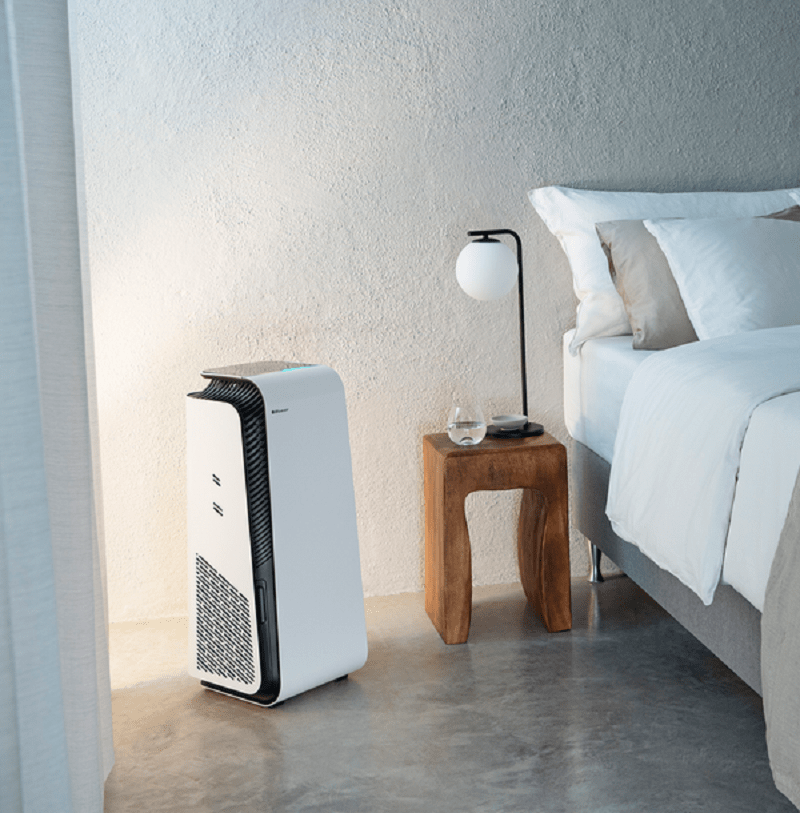The Air We Breathe: What you need to be aware of when it comes to air pollution
(It’s not what you think)
Words by Kevin Luo, Senior Filtration Expert, Blueair
The exciting announcement of COP28 to be hosted in the UAE is only the cherry on top for the sustainability goals for the region. KSA Vision 2030, Dubai 2040 Urban Master Plan as well as the UAE goal to achieve net zero emissions by 2050 seems to mean we are all set to spearhead towards a sustainable future. However, we must heed the warning from Alok Sharma, COP26 president, “We can now say with credibility that we have kept 1.5 degrees alive. But its pulse is weak, and it will only survive if we keep our promises and translate commitments into rapid action.” The effects of climate change have been worsening year on year and if the above statement is anything to go by, it is something we can no longer put on a back foot. According to The United Arab Emirates’ Government portal, climate change is affecting the UAE not only with rising temperature but also seen through a rise in sea levels, reduced water resources, an increase in natural disasters, including out of season flooding and the tornado that was spotted in Ras Al Khaimah last week, and most importantly, air pollution, in which the UAE suffers high pollution rates, with 80 tonnes per capita emission of carbon dioxide a year. September this year also saw the World Health Organization (WHO) share shocking statistics on air pollution, implementing new guidelines to assist in increasing quality for cleaner air – a vital requirement for our survival.
In the early stages of humankind, we lived our lives out in nature. The idea that our primordial state is life outdoors – out in the fresh air – is deeply rooted in our collective mindset. However, over millennia our habitats have changed. We have created increasingly advanced shelters, human life has moved from the open fields, dense forests, high mountains, breezy banks, and beaches – to the indoor landscape. Regardless of where, clean air is seen as essential for cognitive capabilities, good health, and a sense of well-being. Interestingly, there is a close relation between clean air and our health. Even though there are common misconceptions, there is a general understanding that we are highly affected by the air that we breathe.
WHO defines air pollution as “contamination of the indoor or outdoor environment by any chemical, physical or biological agent that modifies the natural characteristics of the atmosphere.” In the most alarming cases, air pollution can lead to serious diseases such as chronic obstructive pulmonary disease (COPD), pulmonary cancer, cardiovascular diseases, and nervous system diseases. Short-term concerns include fatigue, difficulty concentrating and learning, headaches, nausea, dizziness, asthma or allergy-related symptoms, and a drop in creativity, to name a few. Although there is relatively high awareness when it comes to poor air quality outdoors, the awareness of indoor air pollution is significantly lower. Indoor air is on average about five times more polluted than outdoor air. In a study led by the Ministry of Health and Prevention, one in ten children suffers from asthma. Many believe this is due to the mould and dust found within homes and schools, either in the AC units or from leaks that often occur. This is also reiterated in the WHO Guidelines for indoor air quality, noting the requirement for certain standards when it comes to household fuel combustion, selected pollutants as well as dampness and mould. Additionally, the National Agenda of the UAE Vision 2021 “aims to raise the air quality from its current level to 90 per cent by the end of 2021”.
In a study conducted by Blueair, it set out to shed light on the role of indoor air quality in creating a good learning environment for students and teachers. It concluded that good air quality is a prerequisite for a good learning environment – and this can ultimately be positioned for the workplace and home as well. If capabilities are diminished – which they are by poor air quality – there is a risk of limiting a person’s productivity. It is therefore extremely important to increase awareness of indoor air quality by sharing key knowledge about what it actually entails for homes, schools, and the workplace. For us living here in the UAE,and having just come out of the very dusty summer, this includes simple steps such as ensuring to change AC filters, checking air ducts, using cooking vents, cleaning carpets and rugs as well as controlling humidity within an inside area. Investing in an air purifier with a high CADR (Clean Air Delivery Rate), such as the HealthProtect™ air purifier by Blueair, also ensures you are provided with 24/7 protection against dust, smoke, germs, viruses, and bacteria. Air purifiers provide clean and healthy air and HealthProtect™ has been proven to be effective at removing the airborne SARS-CoV-2 virus in independent third-party tests under laboratory conditions.* The air we breathe is something to be taken seriously as it is how we stay alive. As some effects are highly noticeable, whereas others go unnoticed – at least initially, taking steps for good, quality air is something that should be at the top of everyone’s priority list, not only to keep us healthy but allowing us to be able to work at our top performance.

